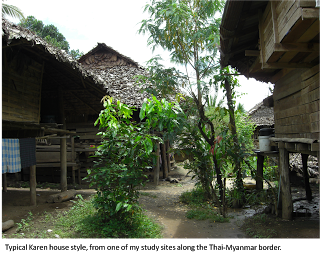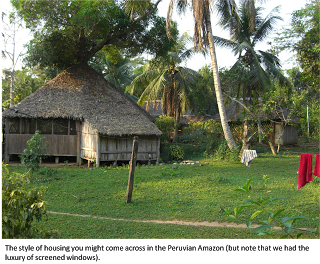(Before It's News)
I’m just back from the American Society of Tropical Medicine and Hygiene (ASTMH) 2012 meeting in Atlanta, Georgia, and once again my brain is swimming with the vast amount of information I’ve taken in. The common theme to these meetings concerns diseases, mostly infectious, that afflict the tropical and subtropical regions of the world. Attendees consist of medical doctors, veterinarians, disease modelers, public and global health workers, nurses, other health care workers, and social scientists, and they (we) come from all over the world. And there appears to be a healthy mixture of students, professionals, and well-seasoned researchers.
I enjoy this meeting because many researchers and research teams present cutting edge research that I end up reading about in major journals for the rest of the year and beyond. I was only there for two days this time around, but there were several really interesting talks to mention.
There was a lot of buzz about disappointing results with the new malaria vaccine (
RTS,S), some disappointing results with regard to a dengue vaccine (it is not easily administered and doesn’t work for all strains), and decreasing sensitivity to artemisinins (blogged about
here) in Africa, South America (Suriname), and some new places in Southeast Asia (Vietnam and Myanmar). And there is debate about which is the best way to approach global health efforts.
One symposium that I found particularly interesting concerned house
architecture and vector control. Essentially, some styles of housing are more prone to allowing mosquitoes in than are others. For example, many of the houses in Southeast Asia are built on stilts and many of the important vectors prefer to fly low to the ground. In the Thai villages where I work, people frequently keep livestock under their houses too, and these other large, warm blooded mammals may also act as a diversion for blood feeding insects that favor large mammals.
Another important consideration with regard to housing and diseases concerns the comfort level of houses. A frequently mentioned reason for not using bed nets is that they cut down on air flow at night. I can attest that trying to sleep in the already stuffy tropics can be difficult in the absence of bed nets, let alone with them.
Another very interesting symposium discussed some historical correlations between (frequently illegal)
mining areas and malaria. Mining areas tend to be rife with disease, perhaps especially mosquito borne disease. These are places that have plenty of standing puddles of water (sometimes from the actual mining efforts), poor living conditions, poor sanitation, and potentially a high proportion of people who, for a variety of reasons, aren’t likely to seek and follow through with adequate medical treatment. The symposium presenters discuss similar situations in Southeast Asia, South America, and Africa. Anthropologists have discussed the influence of land-use patterns on human morbidity and mortality for a long time, but I think that this area of research is ripe for in depth investigation.
One of the problems with developing a vaccine for dengue is the lack of a good animal model of the disease. However, several decades ago there weren’t such problems, medical researchers had ready access to actual human models in the form of ‘volunteers’ (frequently from prisons!)
Dr. Albert Sabin, who developed the oral, live attenuated polio virus, also worked toward the development of a dengue virus. He infected over a hundred volunteers, kept track of their symptoms (including the timing of fevers), and then later re-infected them with another strain in order to look for immunity (strands DENV-1 and DENV-2). He wrote a famous paper on his results in 1952 but the details of his experiment weren’t made public.[1] However, he bequeathed his lab notebook(s) to Duane J. Gubler at the Duke-NUS Graduate Medical School in Singapore and some of the results (including some truly fascinating hand-drawn plots) were
presented at the meeting by Gubler and several colleagues.
One surprising finding was that none of the volunteers developed dengue hemorrhagic fever upon subsequent infection. People who have been infected by one of the four strains of dengue appear to have some immunity. However, that immunity is strain specific and reinfection with another strain is associated with much more severe symptoms, including dengue hemorrhagic fever and dengue shock syndrome. For some reason, the volunteers in Sabin’s experiments didn’t develop these more severe symptoms. (The presenter also noted that the vast majority of volunteers were middle-aged white males. It could be that these strains don’t act as the others do, that there are some human host factors that are important, or a variety of other possibilities.) Sabin’s research also indicated that strain-specific immunity appears to wane quickly (8 – 10 weeks).
And one last symposium that I’ll mention was titled “
Adventures in Tropical Dermatology”. I learned a few things from this discussion, all of which I’m glad I learned in a nice hotel in Atlanta, Georgia rather than first hand in the field. One of the more surprising to me concerned
lobomycosis, a pretty terrible looking skin disease that humans can contract from dolphins. I’ll spare you the nasty pictures but a simple google image search will result in plenty of images. But if you’ve ever had dreams of swimming with dolphins, perhaps especially in Latin America, you might reconsider…
Monday night there was a
discussion by Michael Alpers, one of the researchers who discovered kuru; a severe brain disease resulting from exposure to infectious prions. Prions are oddly shaped proteins and prion infection seems to occur when these oddly shaped proteins come into contact with normal proteins, leading those proteins to become oddly shaped as well. The result is porous neural tissue that resembles something like Swiss cheese. Kuru has an extremely long incubation period, taking many years (5 – 20) to actually set in. The group of scientists who discovered prions had to be extremely patient in their research, and had to persistently put their bold ideas about a new pathogenic agent in front of a frequently harsh scientific audience. Alpers noted that
Prusiner (another member of the research team) received a lot of abuse from scientific audiences when he began talking about the potential existence of prions.
While prion infection is a widely accepted concept today, there is still a whole lot we don’t understand. I think it’s relatively safe to say the same about most diseases, even the ones we’ve known about for centuries.
My takeaway lessons from ASTMH 2012 are as follows:
- Universal fixes to diseases almost always remain elusive
- Long term fixes for most any disease are probably only going to come from multiple, diverse approaches
- This means that collaboration across sub-disciplines and fields is extremely important!
- And many approaches will need to be place-specific
While we might be able to eradicate diseases from some areas, it is important to have community involvement and to address more distal, upstream socio-economic and political issues so that those diseases doesn’t simply return
Disease ecology, like most of life, is extremely complex
***I have clearly glossed over a LOT of other really good symposiums, posters, and talks***
1. Sabin AR (1952) Research on dengue during World War II. American Journal of Tropical Medicine and Hygiene 1: 30 – 50.
Source:







